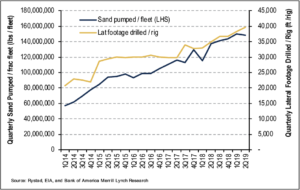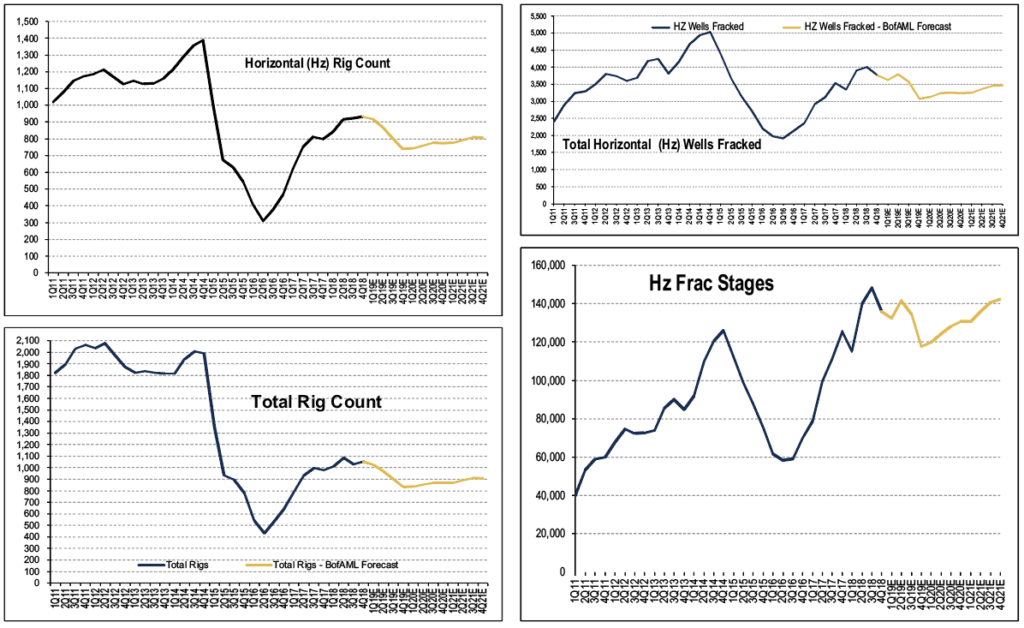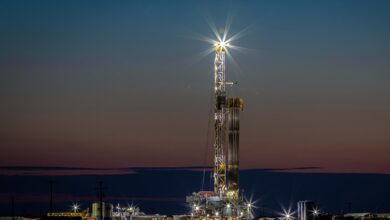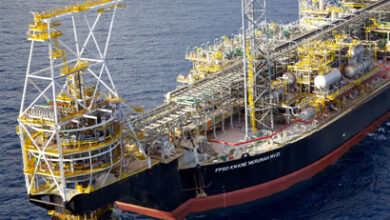Peak in shale’s capital efficiency could help to bring investors back
Analyst: Drilling industry also must show more capital discipline as investors prioritize returns over growth
By Linda Hsieh, Editor & Publisher
Outlooks for the drilling industry have historically hinged on the rise and fall of oil prices. Today, while oil prices still matter, they now wield much less power in terms of their ability to put rigs back to work. “What investors really want is for incremental cash flow to not go to the drill bit,” said Chase Mulvehill, Senior Analyst Oilfield Services for Bank of America Merrill Lynch Research. “They want it to come back to investors. So you will not see a lot of rigs being added, even with a higher oil price.”
The reason for that, Mr Mulvehill said, is investors don’t have confidence in the sustainability of higher oil prices. If prices rise to $60 per barrel when the industry budgeted for $55, companies will likely end up with extra cash flow. But if every company then adds another rig because of this extra cash, prices will fall back to $55.
“It’s an iterative loop,” he said. “Oil prices go down because everybody else added that rig. The investors are saying, ‘Don’t do it. You’re ruining the oil price. Show some capital discipline. When oil prices go up, don’t add a rig. Give me the cash back.’ ”

This change in sentiment among investors has already removed a lot of access to capital for private operators over the past couple of years, and Mr Mulvehill estimates it will result in a 9% reduction in US E&P CAPEX in 2020.
Not just within E&Ps but also within the oilfield services sector, including drilling contractors, he noted that companies are now much more focused on returns instead of growth. “They’ll take a lower growth rate for a better return,” he said. And if the entire industry can continue to show capital discipline, he added, then more investors might return to this industry in the long term.
“One thing that will really bring people back to the oil and gas sector, as a whole, is if capital efficiency were to peak in US shale,” Mr Mulvehill continued. “There’s a general concern that shale will continue to do more with less, that the economics will continue to get better and well productivity will continue to go up. If we can flatten that out, if we can stop doing more with less across the industry, we can begin to have more of an inflationary oil price that will attract people back to the sector, because they will feel like we have some legs to the cycle.”

For the drilling contractors, however, the road may be tough. “For the service industry, in particular the drillers, to make themselves more attractive to investors, they will have to capture more of the value that they’re providing to the industry, rather than giving away a lot of the technology, the innovation and the efficiencies to their customers,” he said, adding that performance-based models may be the path toward achieving this goal.
Finding a way to make such models sustainable may be another challenge, however. “With performance-based drilling, initially you do capture the value, but over time you continue to get better and better, and your customer continues to expect you to get better and better. So how do you continuously price that performance? It’s better than the dayrate model, but it’s going to be extremely difficult to capture the true value of performance-based drilling in an oversupplied market. They’re not splitting the improved economics 50/50.”
To stay competitive, Mr Mulvehill continued, the focus for onshore drilling companies in the coming years will likely be surface and subsurface drilling integration, as well as a reduction in the dispersion in drilling times. “We think that you will continue to see more collaboration between rig companies and downhole service companies to optimize the whole drilling system as opposed to discrete parts of drilling.”
No improvements in pricing
Looking to 2020, Mr Mulvehill said he expects to see another sluggish year for US onshore drillers and other service companies. “It might not be as bad as Q3/Q4 of this year, but you’re still not going to have much improvement in the fundamentals.”
Overall year-on-year rig activity is forecast to decline by 8% versus 2019, but that’s because the rig count has already dropped by 200-plus rigs over the course of this year. “We’re forecasting an average horizontal rig count of about 762 for 2020, so that’s actually up just a little bit relative to where we are today at 749,” he said in late September. “So you’ll get back a handful of the rigs that were lost this year.”
“For the service industry, in particular the drillers … they will have to capture more of the value that they’re providing to the industry.”
– Chase Mulvehill, Bank of America Merrill Lynch Research
No increases are expected in dayrates, however, even if they’ve held relatively firm this year. “To think about 200 horizontal rigs being dropped, which has caused a 20% decline from where we peaked early this year, dayrates have been very well behaved,” he said, noting that declines have been around $1,000-$2,000 so far. “You probably will see more dayrate pressure as we work through the end of the year, but the super-spec rig utilization is in the low 80% range. To date, we haven’t reached that sub-80% threshold, but there is likely still risk to the downside for super-spec utilization into year-end.”
The expected reduction in rig activity means that the number of wells drilled and completed will also fall next year – Mr Mulvehill expects it to decline by 9%. He also anticipates the number of frac stage counts to fall by 5% even as lateral lengths increase.
Further, the knock-on effects of the slowdown in drilling means that production growth is likely to slacken, as well. Even this year, the pace of growth in US onshore crude oil production is already slower than in 2018 – approximately 1.2 million barrels per day this year versus 1.6 million barrels per day last year. “We think that will take another step down – basically the growth gets cut in half to a little over 700,000 barrels a day black oil growth in 2020.” DC
This article includes reporting by DC Contributor Emily Lincke.





